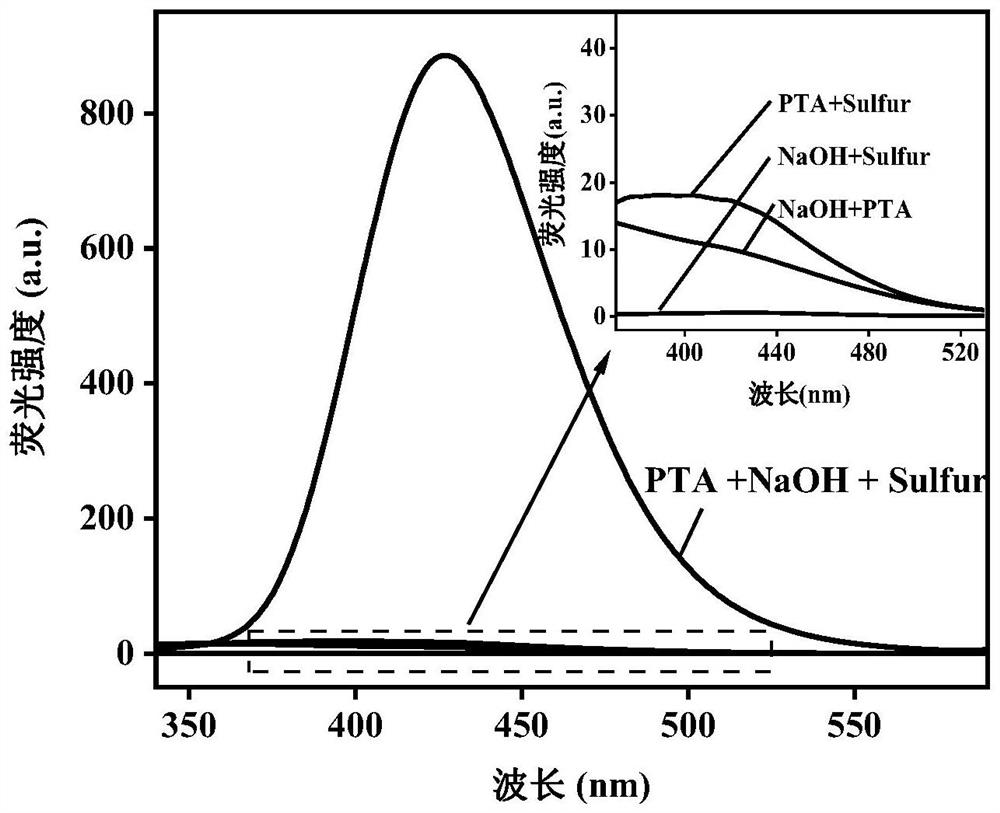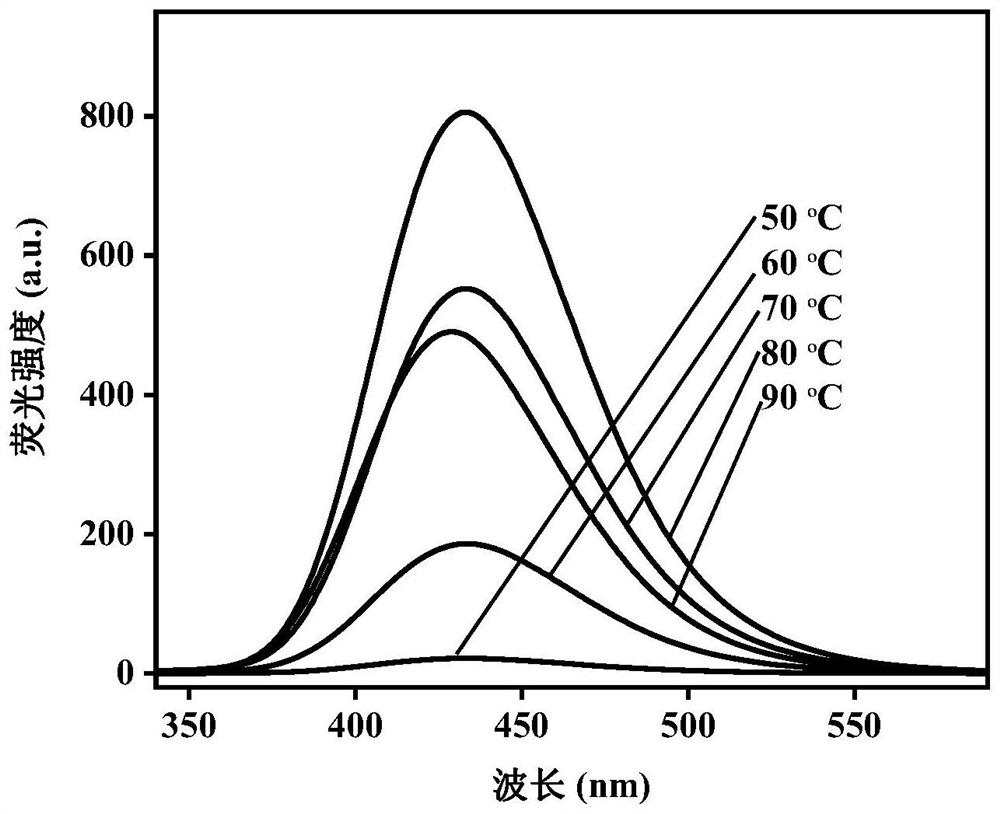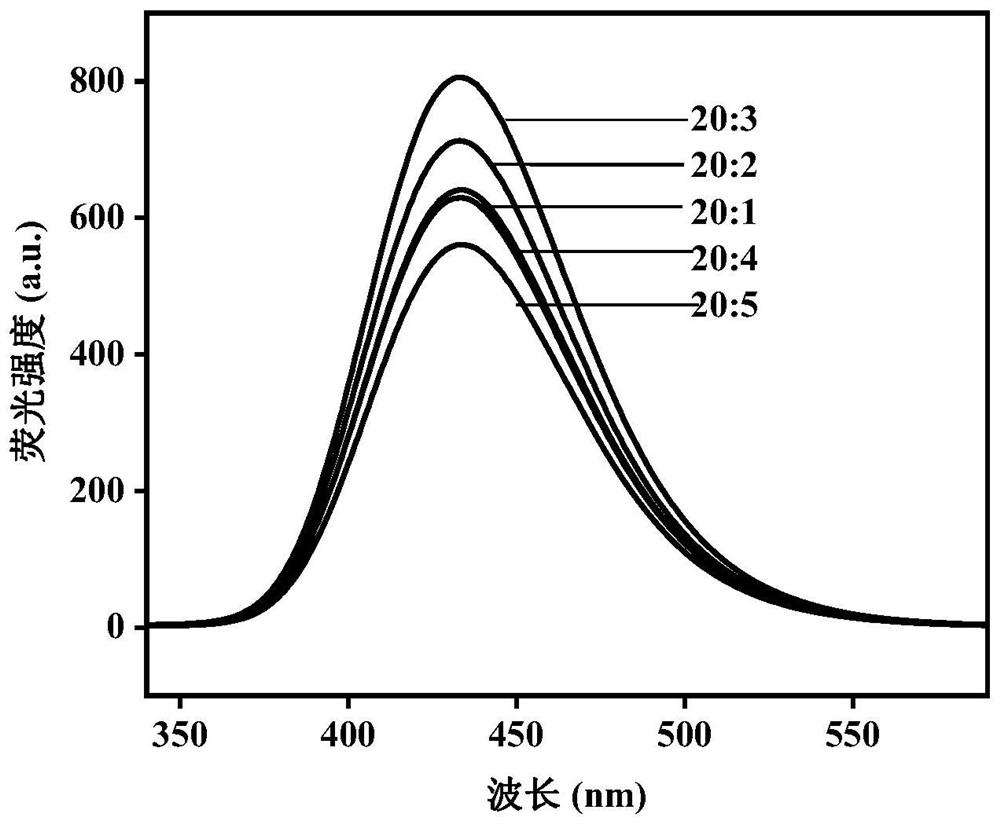Sulfur quantum dot with ultrahigh fluorescence quantum yield as well as preparation method and application of sulfur quantum dot
A technology of fluorescence quantum yield and sulfur quantum, applied in fluorescence/phosphorescence, chemical instruments and methods, measuring devices, etc., can solve the problem of low fluorescence quantum yield, achieve wide application value, large Stokes shift, excellent water solubility Effect
- Summary
- Abstract
- Description
- Claims
- Application Information
AI Technical Summary
Problems solved by technology
Method used
Image
Examples
Embodiment 1
[0044] In this example, blue sulfur quantum dots (PTA-SQDs) with ultra-high absolute quantum yield were synthesized by a one-pot method, and the optimal conditions for preparing PTA-SQDs were explored. The specific process is as follows: Add sulfur powder, sodium hydroxide, terephthalic acid and ultrapure water into a round bottom flask. In order to explore the optimal conditions for the synthesis of PTA-SQDs, the blank control experiment, the reaction temperature (respectively 50 ℃, 60 ℃, 70 ℃, 80 ℃, 90 ℃), the molar ratio of sulfur powder and terephthalic acid ( Fix the amount of sulfur powder substance, change the amount of terephthalic acid substance and several aspects of reaction time to discuss.This example sets three groups of blank control experiments without adding sodium hydroxide, terephthalic acid, sulfur powder respectively, and all the other conditions remain No change. From figure 1 It can be seen from the figure that fluorescence emission can only be produced...
Embodiment 2
[0047] In this example, according to the optimal preparation conditions obtained in Example 1 (the reaction temperature is 80°C, the reaction time is 10 hours, and the molar ratio of sulfur powder to terephthalic acid is 20:3), only the sulfur powder is specifically adjusted as a simple substance Sulfur; the rest of the steps and parameters were unchanged.
experiment example
[0049] In this example, the sulfur quantum dot PTA-SQDs prepared under the optimal conditions in Example 1 were tested for characterization, optical properties, fluorescence sensing tartrazine, selectivity and actual sample analysis. It should be noted that the process of tartrazine detection in this example: add PBS buffer (0.1M, pH=6.00), PTA-SQDs solution, ultrapure water and a series of concentrations of tartrazine in a centrifuge tube. These mixed solutions were reacted at room temperature for 1 minute, and the fluorescence intensity at an emission wavelength of 428 nm was recorded at an excitation wavelength of 310 nm. The detection process of the actual sample tartrazine in this example: the determination method of tartrazine in the beverage sample is similar to the determination method of tartrazine in the buffer solution. Orange juice and soft drinks are available for direct purchase. Before opening the vial, shake the sample well to ensure even distribution. Accura...
PUM
 Login to View More
Login to View More Abstract
Description
Claims
Application Information
 Login to View More
Login to View More - R&D Engineer
- R&D Manager
- IP Professional
- Industry Leading Data Capabilities
- Powerful AI technology
- Patent DNA Extraction
Browse by: Latest US Patents, China's latest patents, Technical Efficacy Thesaurus, Application Domain, Technology Topic, Popular Technical Reports.
© 2024 PatSnap. All rights reserved.Legal|Privacy policy|Modern Slavery Act Transparency Statement|Sitemap|About US| Contact US: help@patsnap.com










